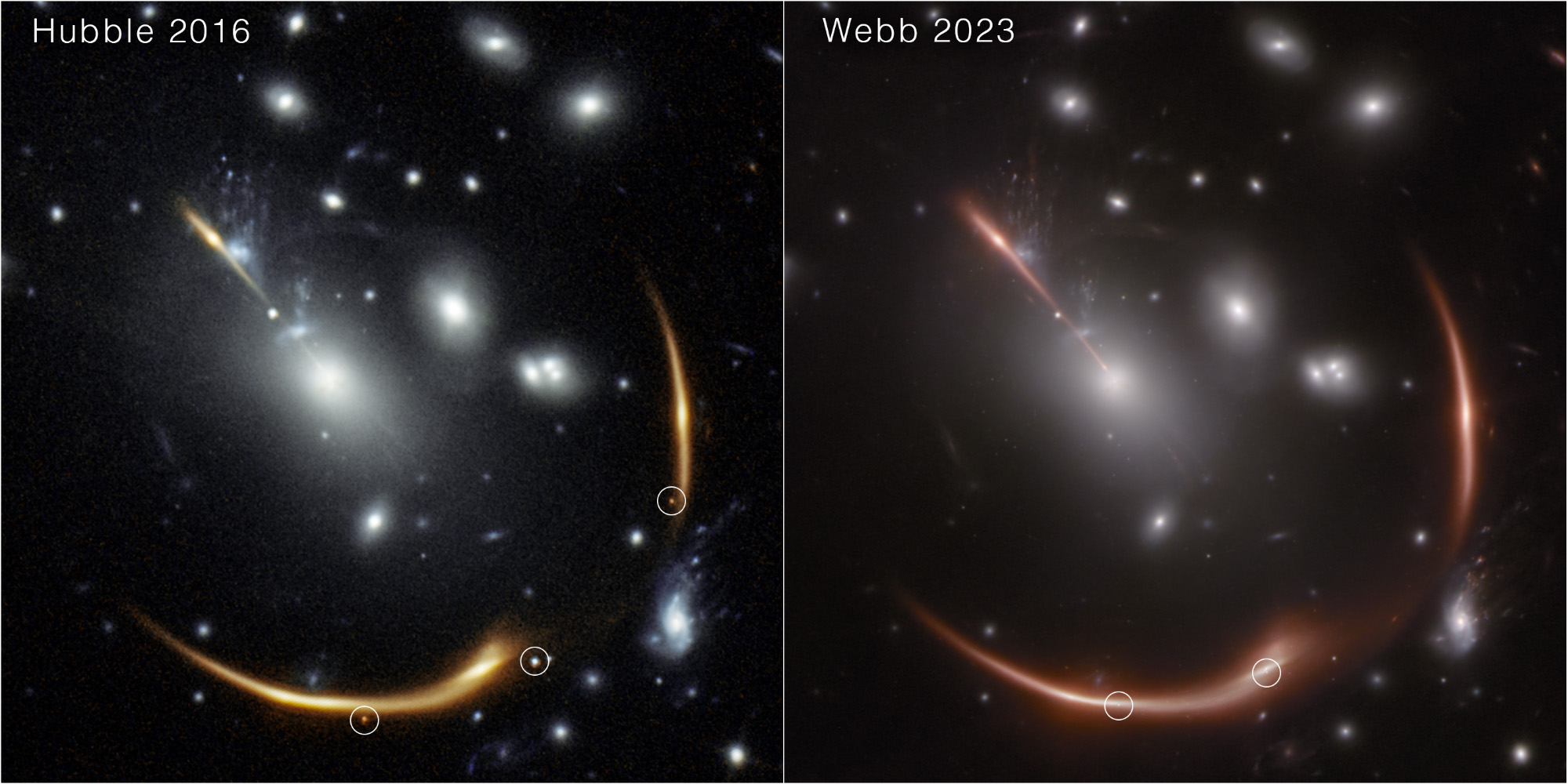Huge clusters of galaxies distort space-time to the point where they act like lenses. The light from more distant galaxies is distorted and amplified, giving astronomers the chance to see detail from farther away than usual. The situation in the MRG-M0138 galaxy is particularly exciting because Hubble saw it undergo a supernova explosion, which they called Requiem. Now, JWST has announced the discovery of a new supernova in November 2023. The exciting news is not only for supernova observations, but also because it can help us understand the expansion of the universe.
The cluster of galaxies in front of MRG-M0138 creates five different images of the galaxy, which means five different views of the supernova. Light will take different paths, and in one path it will take longer to reach us; it is estimated that the scene of this explosion will not appear in front of us until the 2030s.
When a supernova explodes behind a gravitational lens, its light takes several different paths to reach Earth. We can compare these paths to several trains leaving the station at the same time, all traveling at the same speed and heading to the same location. Justin Pierel of the Space Telescope Science Institute and Andrew Newman of the Carnegie Institution said each train takes a different route, and due to differences in trip length and terrain, the trains They will not arrive at their destination at the same time. Science, wrote in a statement.
Likewise, astronomers will see images of gravity-lensed supernovae over days, weeks, or even years. By measuring differences in the timing of supernova images, we can measure the history of the universe’s expansion rate, known as the Hubble constant, which is a major challenge in cosmology today. The problem is, these multiple-imaged supernovae are extremely rare: fewer than a dozen have been detected so far.
Requiem is a Type Ia supernova. These events are caused by a white dwarf stealing enough material from a companion star that it crosses a mass threshold and collapses under its own weight. Since the threshold is the same, a supernova has the same brightness as a standard candle. The brightness of an object depends on its intrinsic luminosity and distance. We can measure brightness, and luminosity is given a standard candle, so we can use both measurements to calculate the distance of a galaxy. From there, we get other cosmological properties.
On the left is the position and view of the Requiem, and on the right is the position and view of the Encore.
Hubble image source: NASA, ESA, STScI, Steve A. Rodney (University of South Carolina) and Gabriel Brammer (Cosmic Dawn Center/Niels Bohr Institute/University of Copenhagen); JWST image source: NASA, ESA, CSA, STScI, Justin Pierel (STScI), and Andrew Newman (Carnegie Institution for Science).
Haber arrived at the Requiem too late to make detailed calculations based on these four images, so work would be completed on the fifth image over the next decade. But JWST discovered the incident in time, and the team was given additional time to follow up on the incident immediately.
Now we have discovered a second gravity-lensed supernova in the same galaxy as Requiem, which we call Supernova Encore. “Encore” was discovered by accident, and we are now actively tracking this ongoing supernova with a time-sensitive director’s discretionary plan,” the duo continued.
Encore is also a Type Ia supernova, making this a fortuitous and lucky observation. Data collection is ongoing, so we’ll know more in the coming months. Of course, there will be a repeat in the 2030s.
Supernovae are usually unpredictable, but in this case, we know when and where we can expect to see the final appearance of the Requiem and Encore. The researchers conclude that infrared observations will have a final hurray around 2035 and yield new and precise measurements of the Hubble constant.
#James #Webb #Space #Telescope #discovers #supernova #lensed #galaxy #light #future
Image Source : www.iflscience.com
